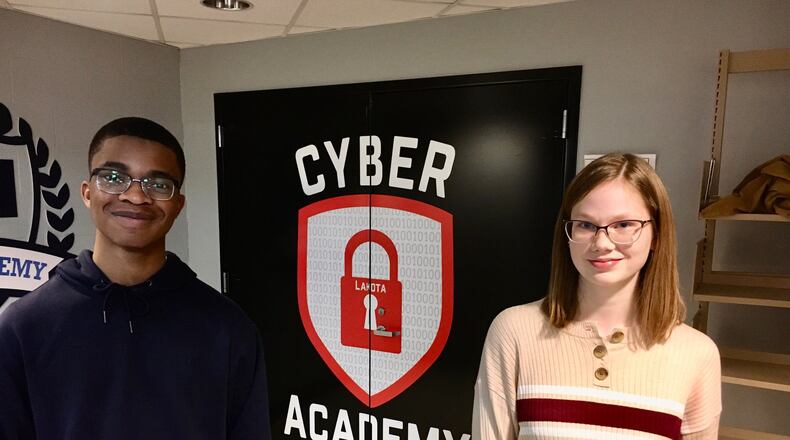“It’s going great,” said David McKain, computer and cyber security teacher at Lakota East High School.
But McKain quickly added, there are challenges that come with being a pioneer high school program teaching cyber security skills.
“Although there is a huge amount of information out there, there are not very many schools doing this kind of thing. The analogy we use is that it’s like building a plane in the air. And we really didn’t know what kind of background the students would have who are coming to us,” he said.
Lakota West High School also has its own Cyber Academy, and together 160 sophomores, juniors and seniors are taking the four-times-per-week class.
When Ohio Lt. Governor Jon Husted spoke at the Lakota East academy’s opening ceremony in August, he and officials from the Blue Ash-based Belcan corporation – an international IT company paying for Lakota’s two academies – spoke of the unlimited career potentials for graduates of the new academy.
Nationally, starting salaries can be as high as $60,000 for the positions, and cyber security experts predict will will be 3.5 million jobs available by 2021.
Lakota students enrolled in the district’s new program will be able to earn up to six industry certifications and will qualify for internship opportunities.
Belcan executives said they chose to partner with Lakota in large part because the district is experimenting with digital learning – including giving free laptops to junior and senior high students – at a pace beyond almost any other district in southwest Ohio.
Keith Koehne, executive director for curriculum and instruction for the 16,500-student Lakota Schools, said the academy is doing well at both high schools.
“It’s an unknown adventure,” he said.
“Students told us how much they like the program even though they didn’t even really know what they were getting into when it started off but now they are learning a lot more than they thought they could,” said Koehne.
Lakota East senior Addy Price said she has been pleasantly surprised how engaging the work can be as the initial class learns the many varied software technologies and programs needed to protect the vital computer systems of private industries and government operations.
“I really like to program. And there are a lot of opportunities available, especially for women,” she said.
“It’s exciting because we are almost working directly with stuff in a potential career,” said Price.
About the Author
